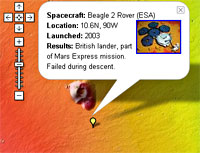 Google’s plans for galaxy-spanning domination have continued apace with the launch of Google Mars, giving surfers the opportunity to explore the surface of the Red Planet.
Google’s plans for galaxy-spanning domination have continued apace with the launch of Google Mars, giving surfers the opportunity to explore the surface of the Red Planet.
Coinciding with the arrival of the MRO (Mars Reconnaissance Orbiter) into Mars orbit on Friday, the new map of the Red Planet offers a familiar ‘Google Earth’-like interface with three viewing modes.
The Elevation mode offers a shaded relief map, colour-coded by altitude and generated with data from the Mars Orbiter Laser Altimeter (MOLA) on NASA’s Mars Global Surveyor spacecraft.
The Visible mode gives a bird’s eye view of the planet (yes, we know there aren’t any actual birds there), displaying a mosaic of images taken by the Mars Orbiter Camera (MOC) on NASA’s Mars Global Surveyor spacecraft.
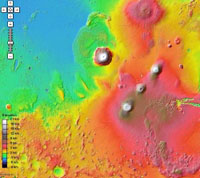 Finally, the Infrared mode offers a mosaic of infrared images taken by the Thermal Emission Imaging System (THEMIS) on NASA’s Mars Odyssey spacecraft.
Finally, the Infrared mode offers a mosaic of infrared images taken by the Thermal Emission Imaging System (THEMIS) on NASA’s Mars Odyssey spacecraft.
In this view, warmer areas appear brighter, and colder areas are darker, and because clouds and dust in the atmosphere are rendered transparent by infrared, the map is incredibly sharp.
Using the Google Mars interface, it’s possible to view and zoom into areas by categories – mountains, canyons, dunes, plains, ridges and craters – or by regions.
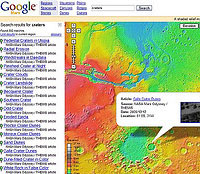 You can also track the landing sites of failed and successful space missions and find the probable crash landing site of the much loved – but totally unsuccessful – Beagle 2 mission.
You can also track the landing sites of failed and successful space missions and find the probable crash landing site of the much loved – but totally unsuccessful – Beagle 2 mission.
A listing of Mars related stories, articles and links wraps up the feature list of this impressive resource.
Google Mars appears to be just a small step for Google’s space plans with the company owning domain names for all the planets.
 In what some are viewing as a challenge to Microsoft’s Office software, Google has dipped into its deep pockets and snapped up Upstartle, a small company best known for their online word-processor, Writely.
In what some are viewing as a challenge to Microsoft’s Office software, Google has dipped into its deep pockets and snapped up Upstartle, a small company best known for their online word-processor, Writely. Blog announcements
Blog announcements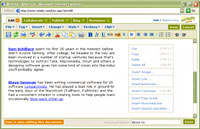 “That could provide enough revenues to pay for the acquisition in months and provide an interesting diversion to keep Microsoft looking over its shoulder,” said Bradshaw and Mitchell, adding that Writely’s integrated collaboration and blogging tools could also prove useful resources for Google’s hugely popular Blogger service.
“That could provide enough revenues to pay for the acquisition in months and provide an interesting diversion to keep Microsoft looking over its shoulder,” said Bradshaw and Mitchell, adding that Writely’s integrated collaboration and blogging tools could also prove useful resources for Google’s hugely popular Blogger service. You know the problem: you’ve rushed into work late, sat yourself down at the desk only to realise that there’s not enough USB ports on the machine so you can’t plug in your DVD backup.
You know the problem: you’ve rushed into work late, sat yourself down at the desk only to realise that there’s not enough USB ports on the machine so you can’t plug in your DVD backup. The ‘Mini Mirror Hub’, described as “the most tiny, fashionable USB 2.0 HUB,” can connect up to four USB 2.0 (or USB 1.1) devices, supporting 480Mbps, 12Mbps and 1.5Mbps speeds.
The ‘Mini Mirror Hub’, described as “the most tiny, fashionable USB 2.0 HUB,” can connect up to four USB 2.0 (or USB 1.1) devices, supporting 480Mbps, 12Mbps and 1.5Mbps speeds.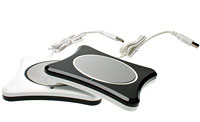 USB Ashtray
USB Ashtray USB Heating Gloves
USB Heating Gloves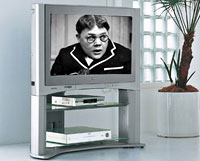 It looks like the days of chunky, clunky cathode ray tube TVs are numbered as worldwide revenues from slimline LCD (liquid crystal displays) TVs surpassed those of cathode-ray (CRT) televisions in the fourth quarter last year.
It looks like the days of chunky, clunky cathode ray tube TVs are numbered as worldwide revenues from slimline LCD (liquid crystal displays) TVs surpassed those of cathode-ray (CRT) televisions in the fourth quarter last year.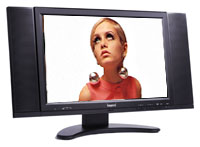 Sales were healthy for plasma-screen televisions, growing 31.3 percent to reach $5.29 billion in the same quarter, giving them the third-largest share of the market after LCD TVs and cathode-ray TVs.
Sales were healthy for plasma-screen televisions, growing 31.3 percent to reach $5.29 billion in the same quarter, giving them the third-largest share of the market after LCD TVs and cathode-ray TVs.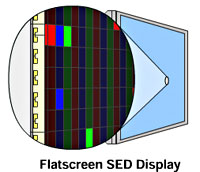 Look out LCDs – here comes SED displays
Look out LCDs – here comes SED displays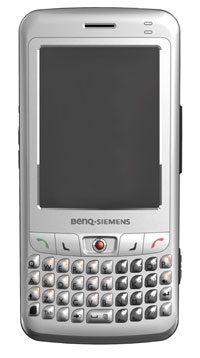 With a veritable orgy of announcements, BenQ Mobile rolled out six new mobile phones at the CeBIT trade show in Germany.
With a veritable orgy of announcements, BenQ Mobile rolled out six new mobile phones at the CeBIT trade show in Germany.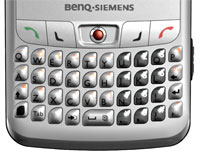 VoIP calls are made possible through the built in 802.11b/g Wi-Fi connectivity and pre-loaded Skype software.
VoIP calls are made possible through the built in 802.11b/g Wi-Fi connectivity and pre-loaded Skype software.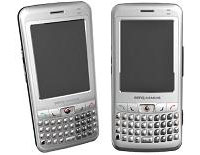 Also announced was the flagship EL71, a tri-band, 16.5mm thin slider phone with a metal casing in brushed aluminium finish. Designed for the “young professional,” the phone sports a 2-inch, 260,000-color QVGA display.
Also announced was the flagship EL71, a tri-band, 16.5mm thin slider phone with a metal casing in brushed aluminium finish. Designed for the “young professional,” the phone sports a 2-inch, 260,000-color QVGA display.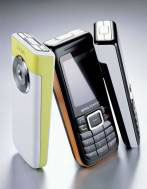 The CL71 slide phone is another slim number (17.8mm) with built-in 1.3-megapixel camera, MP3 player and radio with a 2-inch TFT 262k display offering 176 x 220 picture resolution.
The CL71 slide phone is another slim number (17.8mm) with built-in 1.3-megapixel camera, MP3 player and radio with a 2-inch TFT 262k display offering 176 x 220 picture resolution.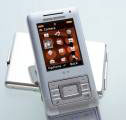 Finally, the wedge shaped E61 comes in orange, yellow, or silver, with a built-in VGA camera with 2x/4x digital zoom.
Finally, the wedge shaped E61 comes in orange, yellow, or silver, with a built-in VGA camera with 2x/4x digital zoom.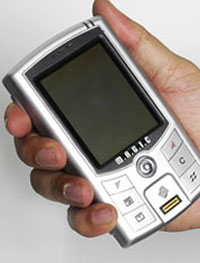 Currently hovering betwixt prototype and retail status, Advance Tech Communications new Windows Mobile smartphone market looks hot! hot! hot!
Currently hovering betwixt prototype and retail status, Advance Tech Communications new Windows Mobile smartphone market looks hot! hot! hot!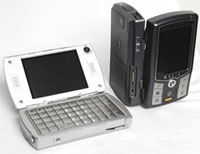 On board storage is taken care of courtesy of a generous 8GB hard disk, backed up by 512MB RAM and 512MB ROM, with a micro-SD expansion card slot.
On board storage is taken care of courtesy of a generous 8GB hard disk, backed up by 512MB RAM and 512MB ROM, with a micro-SD expansion card slot.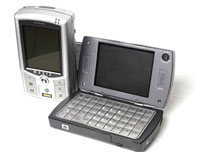 Instead, the company are proclaiming their new device to be a “laptop computer miniaturised to the size of a handheld device,” which perhaps isn’t the snappiest description they could have come up with.
Instead, the company are proclaiming their new device to be a “laptop computer miniaturised to the size of a handheld device,” which perhaps isn’t the snappiest description they could have come up with. Thanks to innovative manufacturers like Logitech, we’ve had mice (mouses?) with more buttons than a Cinderella reunion, but just when you thought that the humble mouse couldn’t get any more new features, Digital Cowboy have announced the world’s first dual pointer mouse, the DCT-DPM1.
Thanks to innovative manufacturers like Logitech, we’ve had mice (mouses?) with more buttons than a Cinderella reunion, but just when you thought that the humble mouse couldn’t get any more new features, Digital Cowboy have announced the world’s first dual pointer mouse, the DCT-DPM1.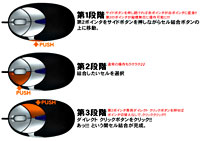 The DCT-DPM1 is aimed at people with multiple desktop displays, where users currently have to scroll across hefty distances when they jump from screen to screen.
The DCT-DPM1 is aimed at people with multiple desktop displays, where users currently have to scroll across hefty distances when they jump from screen to screen.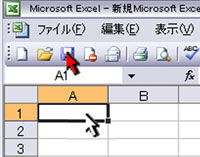 Flipping between the two work areas is then simply a case of activating the mouse button to access the ‘parked’ cursor, without any need for a marathon of cross-screen scrolling.
Flipping between the two work areas is then simply a case of activating the mouse button to access the ‘parked’ cursor, without any need for a marathon of cross-screen scrolling.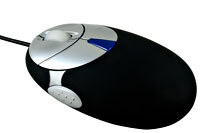 We’ve no idea when, or even if, this bi-cursorary device will be making it to the UK, but it is possible we could be witnessing the next evolution of the mouse.
We’ve no idea when, or even if, this bi-cursorary device will be making it to the UK, but it is possible we could be witnessing the next evolution of the mouse.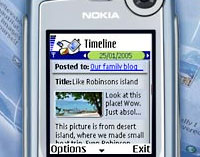 Nokia has launched Nokia Lifeblog 2.0, an updated version of their photo-blogging offering.
Nokia has launched Nokia Lifeblog 2.0, an updated version of their photo-blogging offering.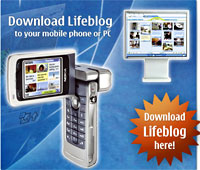 Well, that’s how we’d describe the process, but Nokia has a more flowery interpretation, insisting that adding the extra information is “rendering them as part of the rich tapestry of items that make up your personal Nokia Lifeblog timeline.”
Well, that’s how we’d describe the process, but Nokia has a more flowery interpretation, insisting that adding the extra information is “rendering them as part of the rich tapestry of items that make up your personal Nokia Lifeblog timeline.”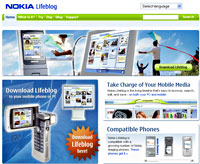 “With imaging becoming an integral part of mobile devices, the way people approach photography is changing. You are able to capture events and create memories in a spontaneous way as your device is always with you,” gushed Mikko Pilkama, whose job title is surely unpronounceable after five beers: Director, Nokia Nseries See New, Multimedia, Nokia.
“With imaging becoming an integral part of mobile devices, the way people approach photography is changing. You are able to capture events and create memories in a spontaneous way as your device is always with you,” gushed Mikko Pilkama, whose job title is surely unpronounceable after five beers: Director, Nokia Nseries See New, Multimedia, Nokia. “Press one if you’re a
“Press one if you’re a 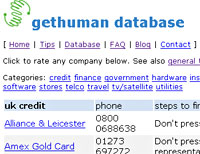 Here’s some example entries from the ‘gethuman’ UK database – obviously, we haven’t tested them all, but initial reports have been encouraging, but tell us how you got on.
Here’s some example entries from the ‘gethuman’ UK database – obviously, we haven’t tested them all, but initial reports have been encouraging, but tell us how you got on.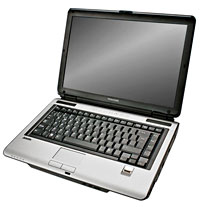 Toshiba is rolling out its first Satellite models with Intel Core Duo and Core Solo processors.
Toshiba is rolling out its first Satellite models with Intel Core Duo and Core Solo processors.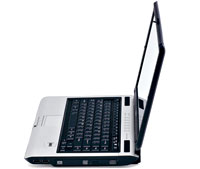 The notebooks include Intel’s 945 Express chipset employing Intel Centrino Mobile Technology to reduce power consumption while and give a kick up the backside of the laptop’s graphics to wireless performance.
The notebooks include Intel’s 945 Express chipset employing Intel Centrino Mobile Technology to reduce power consumption while and give a kick up the backside of the laptop’s graphics to wireless performance.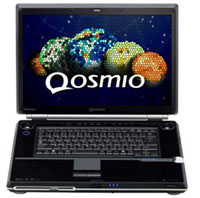 The Qosmio G30 is part is of Toshiba’s multimedia PC line and will come with a TV tuner and Dolby Home Theatre support.
The Qosmio G30 is part is of Toshiba’s multimedia PC line and will come with a TV tuner and Dolby Home Theatre support.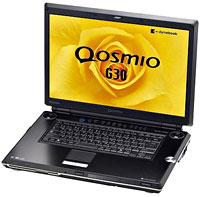 Backed by Toshiba and NEC, it faces heavy competition from the Blu-Ray corner, whose hard-hitting supporters include Sony, Matsushita, Panasonic and Samsung.
Backed by Toshiba and NEC, it faces heavy competition from the Blu-Ray corner, whose hard-hitting supporters include Sony, Matsushita, Panasonic and Samsung.